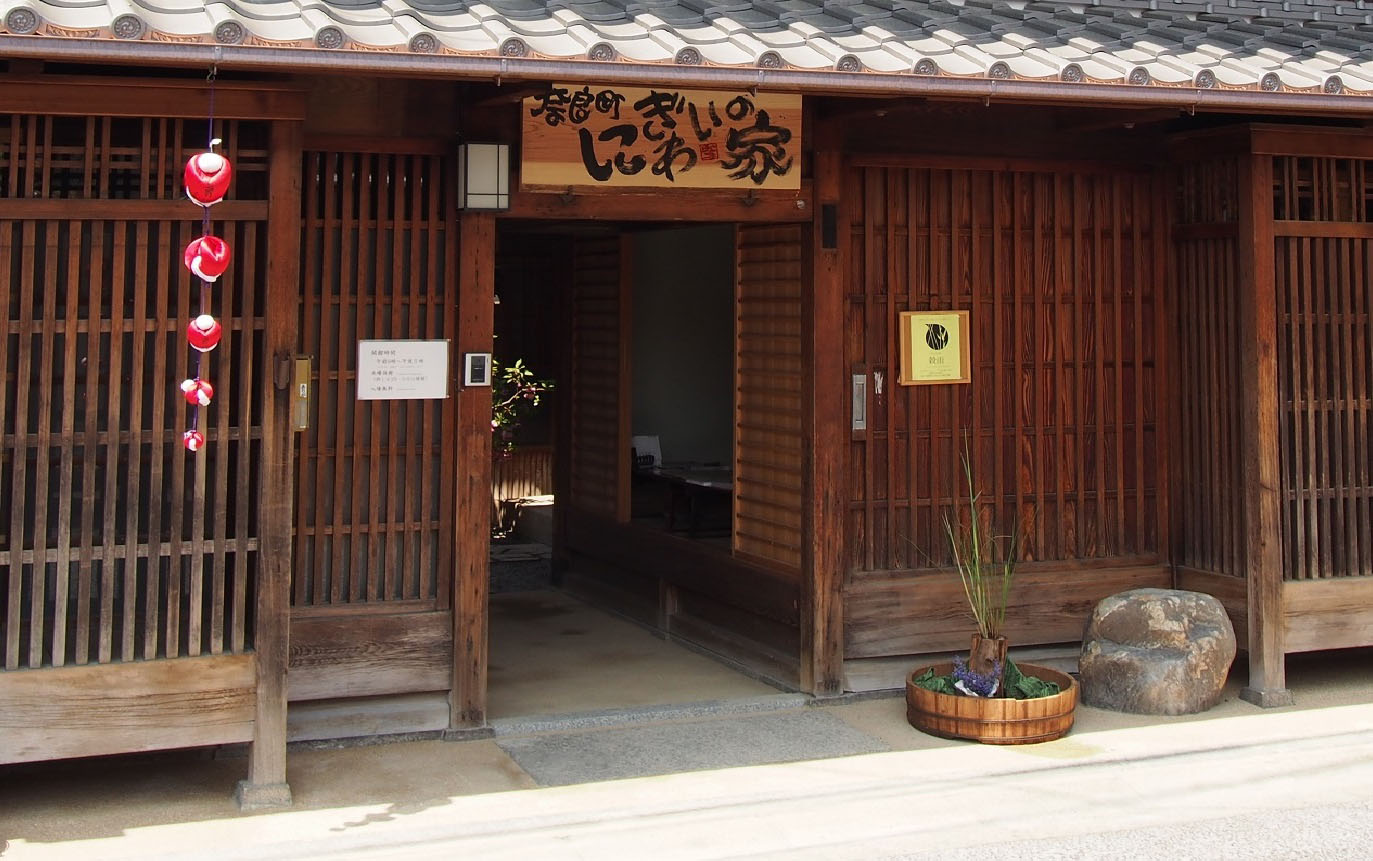Introduction
Naramachi (奈良町, literally “Nara Town”), the former merchant district of Nara, Japan, is a captivating place that feels like a step back in time. Along its narrow lanes, well-preserved traditional residences and warehouses tell the story of its rich history. Today, boutiques, cafes, restaurants, and museums breathe new life into this ancient quarter, making it an ideal spot to explore the intersection of traditional Japanese culture and modern life.
Naramachi at a Glance
- Location: Southern part of central Nara
- Main Feature: Well-preserved Edo-period machiya (townhouses)
- Recommended Visit Time: 2-3 hours
- Best Seasons: Spring (March-May) and Autumn (September-November)
- Key Attractions: Gangoji Temple, Koshi-no-Ie Residence, Naramachi Lattice House
- Access: 10-15 minute walk from Kintetsu Nara Station
Historical Background
The history of Naramachi dates back to the Nara period (710-784), when it was part of the grounds of Gangoji Temple, one of Japan’s most important temples at the time and now a UNESCO World Heritage site.
Around the 15th century, the area developed into a thriving commercial district. Many merchants built typical machiya structures – long, narrow townhouses that served both as shops and living quarters. The narrow frontage of these buildings was designed to reduce taxes, which were calculated based on street frontage rather than total area.
Today, Naramachi preserves numerous traditional buildings, offering a precious glimpse into Japan’s traditional commercial culture and lifestyle.
Main Attractions
Gangoji Temple
Gangoji Temple is one of Nara’s seven great temples, alongside Todaiji and Yakushiji. It originated as Asukadera in the Asuka period and is considered Japan’s oldest temple. In 718, the temple was moved to Nara, becoming a crucial center of Nara’s Buddhist culture.
Although Gangoji is now much smaller than it once was, its remaining structures still exude ancient charm. The five-storied pagoda and the main hall are the temple’s most striking buildings, exemplifying Nara-period architecture. The temple also houses numerous precious Buddhist artworks, including several national treasures.
Visitors can soak in the historical atmosphere and experience the essence of Japanese Buddhist culture. The temple gardens offer beautiful scenery year-round, making it an ideal spot for photography and meditation.
Koshi-no-Ie Residence (Naramachi Lattice House)
The Koshi-no-Ie Residence is a former merchant home open to the public, offering an excellent opportunity to explore traditional Nara machiya architecture. This building perfectly showcases the typical layout of a machiya: a shop space in the front and living quarters in the rear.
Stepping into Koshi-no-Ie, you’ll be captivated by its intricate wooden structure. The latticed windows are not only aesthetically pleasing but also regulate indoor light and ventilation. The interior furnishings are elegantly simple, embodying the Japanese aesthetic principle of “wabi-sabi.”
Visitors can closely observe the architectural details of a machiya and learn about the lifestyle of merchants from that era. The residence also regularly hosts traditional craft demonstrations, allowing guests to experience Japanese traditional culture firsthand.
Naramachi Museum (Naramachi Shiryokan)
The Naramachi Museum, housed in a former merchant’s residence, offers a deep dive into the history and culture of Naramachi. The museum showcases various artifacts related to the district’s history, with a particular focus on the colorful hanging monkeys (migawari-zaru) commonly seen in Naramachi doorways.
Visitors can explore exhibits on traditional crafts, daily life in the Edo period, and the architectural features of machiya. The museum provides a comprehensive understanding of Naramachi’s evolution from a temple town to a merchant district.
Best Time to Visit
Naramachi is a year-round destination, but it’s particularly beautiful in spring (March-May) and autumn (September-November).
- Spring: Cherry blossoms line the streets, creating a picturesque scenery.
- Autumn: The fall colors provide a stunning backdrop to the ancient buildings.
- Winter: Occasional snowfall adds a unique charm to the old streets.
- Summer: While hot, the shaded streets offer some respite from the heat.
Getting There and Around
How to Reach Naramachi
- From Osaka:
- Take the Kintetsu Line from Osaka-Namba Station to Kintetsu-Nara Station (about 45 minutes).
- Walk for about 10-15 minutes from Kintetsu-Nara Station to Naramachi.
- From Kyoto:
- Take the JR Nara Line from Kyoto Station to JR Nara Station (about 70 minutes).
- Walk for about 20 minutes or take a local loop bus to Naramachi.
- From Tokyo:
- Take the Shinkansen to Kyoto Station, then transfer to the JR Nara Line.
- Alternatively, fly to Kansai International Airport and take an airport bus to Nara.
Getting Around Naramachi
- On Foot: Naramachi is compact and best explored on foot.
- Bicycle Rental: Several rental shops are available near Nara Station.
- Local Loop Bus: Lines 1 and 2 cover major sights in Naramachi.
Opening Hours and Admission Fees
- Gangoji Temple: 9:00-17:00, open daily, 500 yen admission
- Koshi-no-Ie Residence: 9:00-17:00, closed Mondays, free admission
- Naramachi Museum: 10:00-17:00, closed Mondays, 300 yen admission
Visitor Tips
- Wear comfortable walking shoes as Naramachi’s streets are often paved with cobblestones.
- Respect local residents’ privacy; don’t enter private residences without permission.
- Many small shops and restaurants only accept cash, so carry enough yen.
- Try local specialties like Narazuke (pickles) and Kakinoha Sushi (persimmon leaf-wrapped sushi).
- When visiting temples, dress modestly and be prepared to remove your shoes.
Official Website
Conclusion
Naramachi is a place that lingers in one’s memory, perfectly blending history with modernity, tradition with innovation. As you wander its narrow alleys, you’ll feel the passage of time while experiencing the essence of Japanese culture. Whether you’re a history enthusiast, architecture buff, or simply looking to experience a different side of Japan, Naramachi is well worth a visit. Come and journey through time in this enchanting ancient merchant district!
